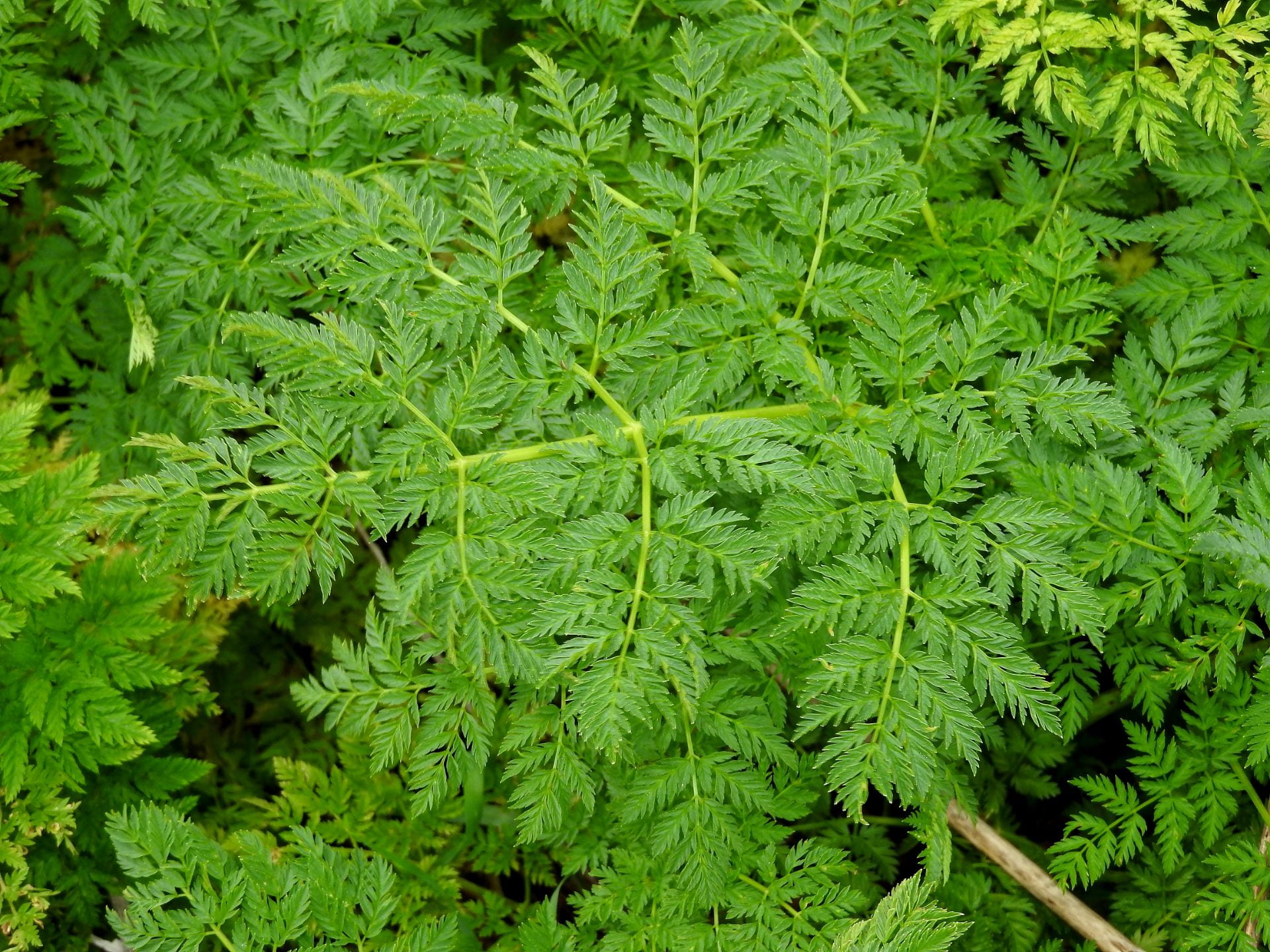Dean Kreager Licking County Extension
Poison hemlock is an invasive weed that continues to spread rapidly across Licking County as well as the rest of the state. It is on the Ohio Noxious Weed List. Ten years ago, you would find it in a few patches here and there but now you see it along almost every roadside, fence row, stream, and nature path. The County, Townships, and Park Districts are working to control poison hemlock in their areas, but it is critical that property owners also eradicate this weed from their property.
Why is it important?
All parts of poison hemlock are toxic to people and animals! This is one of the deadliest plants in North America. This plant is toxic through ingestion or absorption through sensitive areas such as the eyes or nasal passages. Poison hemlock is not known to cause skin rashes. Wild parsnip may grow in the same areas, has some similar appearance characteristics, and can cause severe skin irritation from contact. It is important to be familiar with the differences between these two plants. Wild parsnip has yellow flowers, does not have purple spotting on the stems, and has less of a lacelike appearance on the leaves.
Identification
Poison hemlock has a 2-year life cycle and will vary greatly in appearance depending on the stage in its life. The plants will reach 6-10 ft. tall in their second year and in early summer will have white flowers that look similar to wild carrot. The large stalks will have a characteristic purple spotted appearance. In the fall and early spring, poison hemlock will be found as a thick rosette.

March to April appearance.

Close up of leaves

purpling of mature stalk

Mature plants late May to June (many over 6 ft tall)
Control (From Purdue fact sheet FNR-437-W)
The most effective control may be mowing to prevent seed production, followed with herbicide applications to rosettes and resprouts.
- Manual – Can be effective for single plants or very small infestations. Pull or dig up all plants, place in trash bag and dispose of with regular trash. Always wear protective clothing, including gloves and eye protection, to prevent the plant from contacting skin.
- Mechanical – Mowing or cutting may be effective control but must be repeated often because the taproot can send up new shoots after a single mowing. Tilling or grubbing can kill hemlock and prevent seed production but is generally not recommended because of soil disturbance.
- Chemical – Effective for large infestations and for spot spray applications to individuals and clumps. Herbicide application should be performed while the plant is actively growing and before flowering. First year basal rosettes may be sprayed from midsummer through fall. Second-year plants begin bolting flower stalks in April and begin flowering in mid-May. Follow-up treatments will be required, as seeds already present in the soil sprout. Follow label directions and use a surfactant to increase effectiveness. – Glyphosate: Use herbicides containing at least a 41 percent concentration of glyphosate and follow label directions to mix a 2 percent spray solution. Thoroughly wet all surfaces of the plant but not to the point of runoff. Use caution: Glyphosate is nonselective and will damage or kill any plant it contacts. – 2,4-D or Triclopyr: Broadleaf-specific herbicides that will not harm grasses. Most effective on first-year rosettes or very small second-year plants.
Glyphosate, 2,4-D, and Triclopyr are active ingredients in herbicides and are sold under a number of brand names. These are commonly sold and used by homeowners. Ask your supplier for assistance with brands they carry.
Once the plant has bloomed, chemical control is too late. Seed is already formed and will likely be viable. Mowing when seed has formed will likely spread the seed further. This seed typically survives about 2-3 years in the soil.
While noxious weeds in public right of ways are cared for by government organizations such as the township, county, or park district, it is very important that homeowners do their part to help prevent the spread of noxious plants.
For further information, look up articles by Joe Boggs in the Buckeye Yard & Garden online or contact your local OSU Extension office. In Licking County, the number is 740-670-5315.


 Register
Register